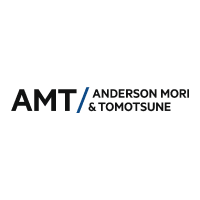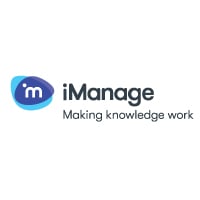

General counsel | JERA Nex







Angela Yuen
General counsel | JERA Nex
First, can you tell me about your career in your own words?
I started out as an energy lawyer in Queensland, Australia after being admitted there. I have always had an interest in building and creating projects with tangible outcomes. That passion coincided with the energy boom in Queensland, as a result I got involved in mining, oil and gas projects.
Around the same time, many Australians were relocating to London in search of new challenges, and I too was equally motivated. I have always enjoyed doing things a bit differently. My then-boyfriend (now husband) and I made a bet: he studied Japanese and aimed to work in Japan, whilst I being from Hong Kong and fluent in Chinese was focused on pursuing opportunities there. The deal was simple, whoever secured a job first, the other would follow. He won and consequently I ended up in Japan!
I took a secondment to Sojitz Corporation. This was my first in-house role in a corporate legal department. I stayed for a couple of years and loved it, but Sojitz was one of the smaller trading companies, with very little negotiating power. I decided I wanted something bigger and secured a contract at Mitsubishi Corporation.
That was likely the highlight of my career. I worked on some incredible infrastructure projects, including headline deals like the Panama Canal expansion. Mitsubishi is a household name around the world and being part of that global scale was incredibly exciting.
After the Fukushima incident, I returned to Australia and joined Newcrest Mining, a listed gold major headquartered in Melbourne. I spent a few years there and we started a family but discovered that we really missed the international deal exposure, so we relocated to Korea for a year before settling back in Japan.
At that point, I had taken a short career break to focus on my family. With two little ones at home I had a decision to make – whether to return to private practice or explore and in-house role. I joined Allen & Overy as Counsel, but the pull to in-house side remained strong. That led to a secondment with JERA Co. Inc. right at its inception, late 2016. I’ve been there ever since, now almost ten years and it’s been a remarkable journey
You’ve now taken on the general counsel position of the renewables business headquartered in London, JERA NEX. Can you give a bit of background on JERA NEX?
JERA Co., Inc. is Japan’s largest power generation company, operating across the entire supply chain from fuel procurement, transportation, to power generation and sales of electricity. We are engaged in the development and operation of gas-fired power generation and renewable energy projects in Japan as well as across various regions worldwide, including Asia, the Middle East, Europe, and North America.
JERA NEX was officially launched in April 2024 and created to lead JERA’s decarbonisation strategy. JERA has committed to achieving net zero emissions by 2050, in line with Japan’s national targets. Unlike JERA’s other subsidiaries, which are regionally focused — in Australia, Asia, the U.S and Middle East — JERA NEX has a global mandate. We’re headquartered in London, which marks a significant shift, for first time all of JERA’s global renewable assets have been brought together under one company.
Our name reflects our mission — JERA NEX is the nexus of JERA’s energy transition, connecting green technologies with our existing global platform. Our business model is to build, invest in, own, and operate renewable assets — including onshore and offshore wind, as well as battery storage. We also aim to integrate these capabilities into JERA’s broader low-carbon fuels strategy.
We already have investments in offshore wind in Australia, Taiwan, and in Japan , as well as European assets in Belgium, Germany and Ireland . We also have solar and battery projects in the US, solar in the Middle East, and onshore wind in the UK. In Southeast Asia, we’re active in Vietnam and the Philippines through partnerships with local developers.
Our public target is to achieve 20 gigawatts of renewable capacity by 2035.
How did you end up the running for the General Counsel role?
It was a bit opportunistic, to be honest! In my previous role as Deputy General Counsel, I led global legal tech and innovation, overseeing legal functions across JERA’s major subsidiaries. That included building out legal teams, recruiting talent, and aligning legal’s strategy and function with each business’s operational goals.
As part of that, I worked closely with the original JERA NEX leadership team, helping shape the legal function from the ground up. It was exciting: being involved at a strategic level, seeing both the global and regional landscape, and working closely with a wide range of stakeholders
When JERA NEX was established, I was initially tasked with helping recruit a General Counsel. But as we progressed through the process and, especially during interviews, I realised this was a role I wanted to pursue myself. JERA NEX operates very much like a startup — we’re literally building the plane as we fly it. That means no established systems, no large legal team– just a blank canvas. It called for someone hands-on, creative, and comfortable navigating fast-moving, unstructured environment.
We had strong interest from major corporates like BP and Shell, but our CEO was looking for something different someone entrepreneurial, ready to roll up their sleeves and build from scratch.
After a while, the search wasn’t quite landing, and I started to seriously consider stepping forward. I had done a lot in LNG, and for my own development, I wanted to focus more on renewables – that’s where I see the future. Plus, London has always been on my list of places to live.
So, I had conversations with our CEO, Natalie Oosterlinck, and the executive team. It turned out to be a great fit. I already had strong ties to HQ, which proved invaluable in setting up a new business. Those relationships meant I could hit the ground running, connect the dots globally, and start building something meaningful.
And the first thing you had to deal with was this major deal with BP, right? I remember you emailed saying you’d taken on the new role in London, and then it felt like only a few months later this was already happening.
Exactly. Last year was full of change. I’d just taken on the job, and the reason my family isn’t here is because the school year had already started. So, we made a decision quickly. There was no time to search for schools or settle in gradually. I just dove straight in.
At first, the deal was very exploratory. It was a small group involved, namely our Chief Investment Officer, CEO, me, and a few senior execs including our global CEO. Early conversations were at a high level with BP and advisors, asking: does this even make sense?
But then it escalated fast, essentially from zero to 100. Within ten weeks we were signing.
BP is a major partner in this deal. What can you share about the experience of working with them and how the collaboration has evolved?
Initially, I was a bit skeptical. This deal involved fully combining BP’s and our offshore wind assets into a new business. My hesitation was around culture. BP is a huge corporate with a very strong identity, and we were bringing in assets like Parkwind, our Belgian offshore wind business, which has a small, family-run feel. I was worried about cultural clash. Plus, the offshore wind sector has had a tough time recently, with rising interest rates, volatile electricity prices, procurement challenges. The industry’s at an inflection point. Some oil majors that had shifted toward energy transition have reversed course, pulling back from renewables. And we’ve seen companies walking away from projects or consolidating portfolios.
This was a strategic decision for us. Our goal is 20 GW of renewables by 2035. By combining our offshore wind assets with BP’s, we’re now looking at a total pipeline of around 18 GW globally. Much of that is still in development, but it’s a big step. We’re now almost halfway to our target.
The fit turned out to be stronger than expected. BP brings scale — particularly in procurement, supply chain, and market access in places like the UK and Germany. We bring operational experience. We’ve delivered projects, secured leases, we know how to execute.
So as long as the numbers worked, it really made sense. In terms of offshore wind asset size, it puts us in the top three or four players globally, just behind the likes of Ørsted and RWE.
You’re one of the relatively few people who’ve had to build a legal department from scratch, and quickly, too. What were your first priorities? And what comes next?
That creative, blank-canvas aspect was a big part of what attracted me to the role. I liked the idea of building something new, rather than stepping into a major corporate with established systems and processes.
I’ve had some experience with that before. When I joined JERA, it was at the very start of the joint venture. We had secondees from TEPCO and Chubu, and then Kenji Tagaya-san from JBIC, I came in as the ‘X-factor’ hire. Over the past nine years, I helped build the legal function there from the ground up. Japan is a very different landscape. That experience shaped a lot of my thinking, and I’ve brought that mindset with me to London.
In the UK market, you take inspiration from HQ, but you also have to tailor it to the business. It has to be fit for purpose. So, the first step is understanding the business. What’s the ambition? What are the strategic goals? And then, identify the skill sets needed.
Under legal, there are really three pillars: Legal, Compliance, and Governance. Governance was a top priority, so hiring a company secretary was one of the first moves. I also looked at existing capabilities, particularly within Parkwind, which has a strong and established legal team focused on offshore wind. That’s already about half of our business.
The other half is onshore, and for that, we needed to look ahead. What’s the best path to reaching our 20 GW ambition? It won’t be through organic development alone; M&A will be critical. So we needed legal talent with experience in driving organic growth.
At the same time, compliance needed building out in parallel. You can’t treat any of the three pillars — legal, compliance, governance — as optional or secondary. They need to run in parallel.
And of course, people are everything. I’m proud of the team we’re building. It’s small but tight-knit, and we’ve been very intentional about the culture: collaboration, creativity, psychological safety, and inclusion. We’ve built a diverse team, and from the beginning I’ve been clear: we need to be a high-performing unit that is efficient, effective, and deeply embedded in the business.
Part of that means being flexible and agile, and that includes using legal tech. I’m passionate about legal tech and the digitalisation of legal functions. We shouldn’t just do things the same way because “that’s how they’ve always been done.”
When I hire, I look for three qualities: curiosity, confidence, and creativity. I want people who’ll challenge the status quo and bring fresh thinking. It’s about doing things faster, better, smarter.